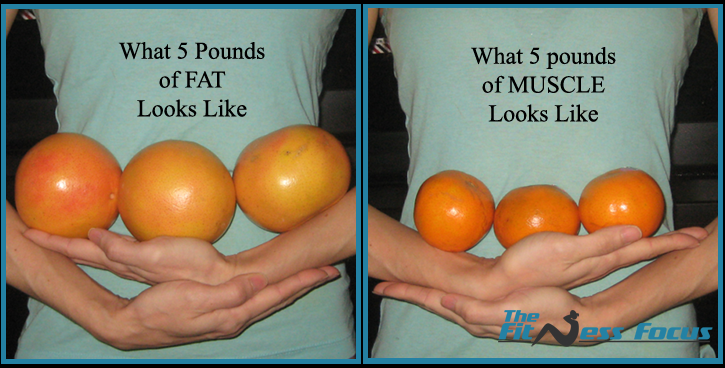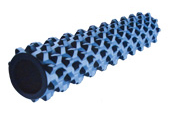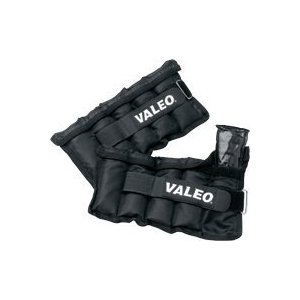The bathroom scale…as prevalent as a toilet in the American home. But more seriously…
Scales are not the end all, be all when it comes to measuring your health and fitness progress. Haven’t you ever wondered why the number on the scale doesn’t always change even when your clothes are fitting better?
It’s called body recomposition, and it is truly how the body adapts to your lifestyle. You almost never just lose body fat when you work out, because you also increase your lean body mass simultaneously.
For our sake and the simplicity of this article, we’re going to break down the four main areas of body composition:
- Body Fat: Fatty tissue. It’s how your body stores the extra calories you’re consuming to use as extended energy over the long-term. Thank our ancestors for that.
- Muscle: We’re talking about the sexy ones you would probably like to see on yourself like six-pack abs or biceps. They are responsible for your bodily movements.
- Bone: A type of connective tissue that gives the body its structure and supports various organs.
- Water: The body is mostly made up of water (about 65%) and is used by the living cells in our body to function properly.
The two key factors we’re going to talk about when measuring body recomposition are body fat and muscle.
Why the Scale is Not the Best Tool for Measuring Success
Muscle is denser than body fat and takes up much less space.

From the example above, you can clearly tell that the scale is not the best tool to track success.Yes, it does a great job of telling you your body weight, but is not the best for tracking changes or body recomposition.
Two – Better Body Tracking Methods
The two methods I recommend for more accurately tracking the progress you’re making:
- Body Part Circumference Measurements
- Body Fat Percentage
Get to Know your Body Part Circumference Measurements
Why measurements? Because you see yourself in the mirror every day. The tiny changes that eventually lead to significant changes over time, are not evident to the human eye from day to day. Let’s face it, 1/32nd of an inch here is going to be missed by you unless you have the best vision in the world. However, at the end of the week, you have lost almost a quarter inch, which is definitely measurable. The change happens so gradually, you don’t even notice with your own eyes.
What Body Parts to Measure
Measurements should be taken from these seven key areas:
- Calves, left and right
- Thighs, left and right, 2″ below the groin
- Hips, at the widest point
- Stomach, women at the narrowest point, men at the naval
- Chest, under the shoulders
- Arms, relaxed, at the widest point
- Neck, at the narrowest point
Measuring Tips
- You do not have to flex, puff out our your chest, or suck in your stomach. Just be sure to measure consistently in the same area and in the same state.
- Measure at the same time of day.
- Do not exercise before taking measurements, especially weight training as your muscles will be bigger after a good weight workout.
- Your measuring tape should be taut, not too tight or too loose. This comes back to being consistent.
Tools for Body Part Measurements
- Measuring Tape: You can use a simple fabric measuring tape. There are also specially designed one-handed measuring tapes that measure with the same amount of tension each time like OrbiTape. It seems like an indulgence, but it really makes life a lot easier.
- Tracking Journal: You can use a simple excel sheet, print my updated measurement tracking journal, or use plain sheet of notebook paper. Just be sure to write your measurements down somewhere and keep track at least weekly.
How to Measure Body Fat Percentage
There are many, many ways to measure body fat: You can get dunked under water, have x-ray beams shot through your body, or be put through an air displacement test. And even with how crazy some of those methods sound, they are not even always the most reliable…or practical.
Here are four realistic methods for measuring your body fat percentage:
Body Fat Calipers: You might remember these from school. A pinch here, a pinch there. Body fat skinfold calculators work by measuring the thickness of folded skin and the body fat that lies within. Though it does take practice to get the measurements right, and you need to be really careful about doing it the exact same each and every time, skin fold tests are very accurate when performed correctly. You can use these yourself or find a gym professional that has experience. Skin fold calipers are around ten dollars, I recommend spring-loaded calipers like these to get a more consistent results.
U.S. Navy Calculator: Input a few of your measurements here, and you have your body fat percentage. The web page states this test is accurate to within 1-3% for most people. but accuracy is not as high if you carry a lot of muscle.
Body Fat Scales: When I first saw these on the market, I thought they were a marketing ploy. But seriously, some actually work quite well. How do they work? These scales work by producing a low-level electrical signal that measures the body’s composition and computes percentage of body fat. The EatSmart GetFit Body Fat Scale is what I have in my home and I am really happy with it. I recommend it to friends and family members. Scales range in the cost of $30 to well over $100. Read reviews before purchasing to ensure you’re getting your money’s worth.
BodPod: Air-Displacment Plethysmography. Weird…I know. Your body density is determined by air displacement. This is a highly accurate method of testing, but costs are $30-50 per analysis. Here is the BodPod site locator to find a testing site near you.
Key Point
If you switch between body fat measuring methods, you aren’t doing yourself any favors as these methods will all have varying degrees of accuracy. However if you stick with one, you will have an accurate baseline to measure against. Select one method and stick with it.
You Should Still Use a Scale…Kind of
You must remember that a scale is one tool in the battle of the bulge, but not the only one. I hope by now you are able to understand why the scale is not the best for tracking results. A scale measures weight loss. I can tell you how to lose 5lbs by tomorrow morning, but it is going to be water weight – not lost body fat. Plus, you’d be grouchy, your body would not be running efficiently, and your skin would be dehydrated, which will make you look older.
In the end, don’t get to caught up with the number on the scale. If you stick to daily exercise in addition to healthy eating and lifestyle habits, you will hit your goal. With that said, use the scale as a way to support your goals not work against them by focusing only on the number. Half the time when you set your goal weight, it’s not the right weight for you anyways. The lowest weight you should be at as an adult is the weight you were able to maintain for one full year after you turned 18 years old. And remember, it’s all about how you look and feel. Sometimes when I feel like I look sexiest, it’s when I’m 5 lbs up from where I think I should be…muscle weighs more than fat.
Resources
Printable Measurement Log with Body Fat Percentage Tracking – Click File > Make a Copy or Print
Link to pdf: https://drive.google.com/file/d/0B1ushyQyCrh2S01qLVFucHBDSWc/
How do you track results? Please leave a comment below.




Sorry Bethany, I have to interject. 1 pound of fat weighs the same as 1 pound of muscle. The difference is space that they both occupy. Fat is composed of more air and is less dense than muscle, more volume to fat.
You’re right!
Thank you for the encouragement.My first week I lost 1.4 Today was the end of my 2nd week I gained 1.8 not happy but not giving up. I will beg. My 3rd week today.
Hi Nora, Here is a link to a post I wrote about body weight fluctuations that you might also find helpful – https://thefitnessfocus.com/health-nutrition/normal-body-weight-fluctuations-explained
Thank you for this article! I am on day 8 of my 21 day fix…sore but discouragedafter stepping on the scale last night. You reminded me that weight is only one measure. I’m refocused again.
Thanks coach!
You’re welcome!
Good Morning,
Thank you for this article I was wondering how i should measure proberly, This was very helpful.
:) Jennifer
Hi Jennifer, You’re welcome!